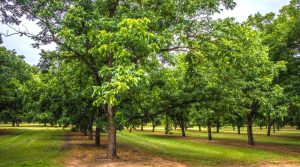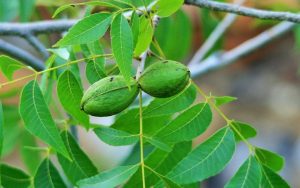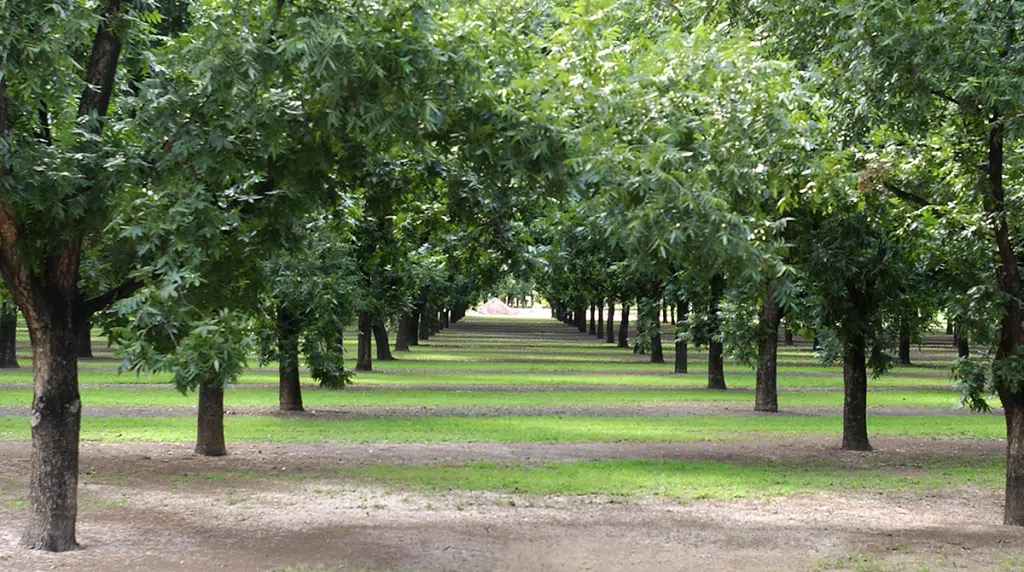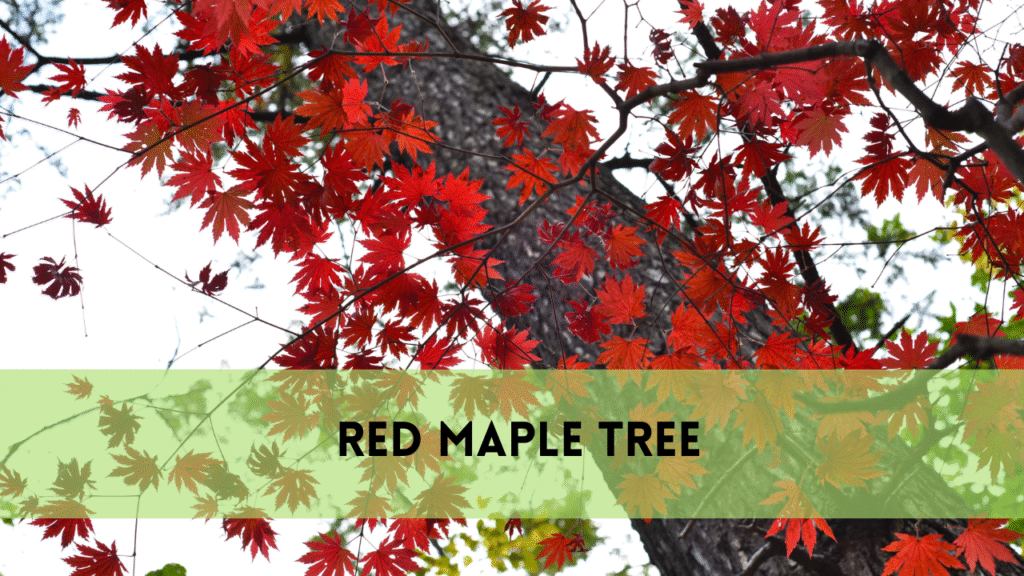Types of Pecan Trees in Texas
Pecan trees, which are firmly ingrained in Texas’ cultural and agricultural past, are cherished by both inhabitants and farmers. Pecan trees contribute greatly to Lone Star State’s beauty and economy, with their dignified presence and plentiful harvests. In this comprehensive guide, we’ll go on a journey to discover the numerous types of pecan trees in Texas. From classic native types to high-yielding modified cultivars, each kind provides distinct traits and benefits to producers and lovers. Join us as we explore the rich tapestry of pecan tree diversity, gaining great insights and practical recommendations for growing these cherished trees in Texas landscapes.
Types of pecan trees in Texas
The Importance of Pecan Trees in Texas
Pecan trees are an important part of Texas’ natural and economic landscapes, making them a valued asset to the region.
Ecological Benefits: Pecan trees provide habitat and food for a variety of wildlife species such as birds, squirrels, and insects. Their vast root systems assist in minimizing soil erosion and increasing soil health by increasing nitrogen levels and water retention.
Economic Importance: Pecans are a highly regarded nut crop with great economic worth. Texas is one of the world’s major pecan producers, boosting the state’s agricultural economy and offering job opportunities for farmers and industry personnel.

Pecans are culturally significant in Texas, having deep-rooted traditions and culinary usage that date back centuries. Pecans are a versatile element in a variety of cuisines and culinary traditions, from pecan pies and pralines to roasted nuts and pecan butter, demonstrating its significance in Texas culture and cuisine.
Exploring Pecan Tree Varieties in Texas
Pecan trees come in a vast range of types, each with its unique characteristics and qualities. From the towering native pecan trees that have graced the Texas landscape for ages to the current improved cultivars bred for increased nut production, there is a pecan tree variety for every preference and growing climate.
Native Pecan Trees: These trees, also known as Carya illinoinensis, are native to
Texas and appreciated for their vigorous growth and delicious pecans. Native pecan trees frequently have a spreading canopy and can reach amazing heights, making them a standout addition to any landscape.
Enhanced Pecan types: Developed through rigorous breeding and selection, enhanced pecan types provide greater nut quality, disease resistance, and adaptability to a wide range of growth environments. These hybrids frequently have faster growth rates and larger yields than native pecan trees, making them a popular choice for both commercial orchards and household gardens.
Improved Pecan Varieties
Improved pecan variants are the result of years of research and breeding aimed at improving the characteristics of classic pecan trees. These cultivars have been carefully chosen and cultivated to provide exceptional nut quality, disease resistance, and adaptability to a variety of growing environments.

Kanza pecan trees are well-known for their large, high-quality nuts and rich flavour. This cultivar is very resistant to pecan scab, a common fungal disease that can reduce nut yield. Kanza pecans are regarded for their rich, buttery flavour and are popular among both producers and consumers.
Cape Fear pecan trees are known for their strong growth, early nut yield, and huge, high-quality pecans. This cultivar is well-suited to Texas’ climate and soil conditions, and it is noted for producing consistent yields and high-quality kernels.
Lakota pecan trees are known for their quick growth, flexibility, and high nut quality. This cultivar yields huge, thin-shelled nuts with a sweet flavour and excellent kernel quality. Lakota pecans are highly valued in both commercial orchards and home gardens for their exceptional taste and productivity.
Planting pecan trees in Texas
To ensure good establishment and long-term growth, pecan trees must be planted according to proper recommendations. This is a detailed guide:
Site Selection: Select an area with well-drained soil and direct sunlight exposure. Pecan trees prefer deep, loamy soil but can grow in a variety of soil types. Avoid low-lying regions that are prone to waterlogging.
Preparation: Plan ahead of time where you will plant. Remove all weeds, pebbles, and rubbish from the area. Create a hole that is double the width and depth of the tree’s root ball.
Root Ball Preparation: Before planting, evaluate the pecan tree’s root ball. If it is covered in burlap, remove it as well as any cables. If the roots are wrapping around the root ball, gently release them to promote outward growth. Plant the pecan tree in the center of the hole, making sure that the top of the root ball is level with the surrounding soil. Backfill the hole with excavated earth, gently tamping it down to remove any air pockets.
Watering: Once planted, thoroughly water the tree to settle the soil around the roots. To support the establishment, provide regular watering during the first year.
Mulching: To preserve moisture and prevent weed growth, apply a layer of organic mulch around the tree’s base. To prevent rot, keep the mulch a few inches away from the tree trunk.
Staking (if necessary): If the tree is tall or in a windy location, stake it to provide support while the roots grow.
Following these guidelines will give your newly planted pecan trees the best chance of surviving in their new surroundings.
Caring for Pecan Trees
Caring for pecan trees is critical to ensuring their health and productivity. Here are some important suggestions for appropriate care:
Watering and Fertilizing: Pecan trees require regular watering, particularly during dry spells, to keep soil moisture levels stable. Provide deep, infrequent irrigation to promote deep root growth. In addition, use balanced fertilizer formulas in early spring to replace critical nutrients.
Pest and Disease Management: Check pecan trees on a regular basis for symptoms of insect pests like pecan weevils and aphids, as well as common diseases like pecan scab and bacterial leaf scorch. Implement integrated pest management measures, like as sanitation and pruning, to reduce pest and disease damage.
Winter Protection: To protect pecan trees from frost damage during cold winters, wrap their trunks in insulating materials like tree wrap or burlap. Apply a thick layer of mulch around the tree’s base to protect the roots and regulate soil temperature.
By taking adequate care of your pecan trees, you may enhance their health and vigor, assuring a plentiful crop for years to come.
Related Posts:
Harvesting Pecans in Texas
Harvesting pecans is a thrilling experience for producers, signifying the conclusion of months of preparation and expectation. Here’s all you need to know about collecting pecans:
Timing and Techniques: Pecans are typically ready for harvest in late autumn, between October to December, depending on variety and local climate. Keep an eye out for signs of maturity in the nuts, such as husk split and nut drop. To efficiently harvest the nuts, use a combination of mechanical shakers and handpicking.
Post-Harvest Handling: Remove the pecan husks as soon as possible after harvesting to avoid mold formation. To reduce moisture content, allow the nuts to air dry in a well-ventilated place for several days. Pecans should be stored in ventilated containers like mesh bags or baskets.
By adhering to these harvesting and handling practices, you can ensure that your pecans are of good quality and ready for consumption or processing.
FAQS
What are the most suitable pecan tree varieties for Texas?
Texas’s greatest pecan tree varieties include Desirable, Pawnee, Cheyenne, and Wichita. These cultivars thrive in Texas’s climate and soil conditions, producing high-quality nuts.
What are the steps for planting pecan trees in Texas?
When planting pecan trees in Texas, seek a well-drained location with full sunlight exposure. Backfill a hole that is twice as big and deep as the tree’s root ball. Water thoroughly after planting, and provide frequent watering during the first year.
What is the optimal time to harvest pecans?
Pecans are normally collected in late autumn, between October and December, when the nuts have developed and begun to fall off the tree. Keep a tight eye on the nuts for indicators of ripeness, such as husk splitting and nut dropping.
How do you protect pecan trees from pests?
Implement integrated pest management measures to protect pecan trees against pests, such as monitoring for infestation indicators, using suitable insecticides, and cultivating beneficial insects.
Can pecan trees handle the Texas weather?
Pecan trees are well-suited to the Texas climate and can resist a variety of climatic conditions, including heat, drought, and cold spells. Proper care and management can help trees thrive in harsh conditions.
Conclusion
Finally, the wide range of pecan tree kinds available for cultivation in Texas, together with proper planting, maintenance, and harvesting practices, allow arborists and lovers to enjoy the beauty and wealth of these wonderful trees. Pecan trees may thrive in the Texas landscape by choosing acceptable cultivars, providing ideal growing conditions, and addressing frequent obstacles. They will provide shade, beauty, and a tasty crop for centuries.




